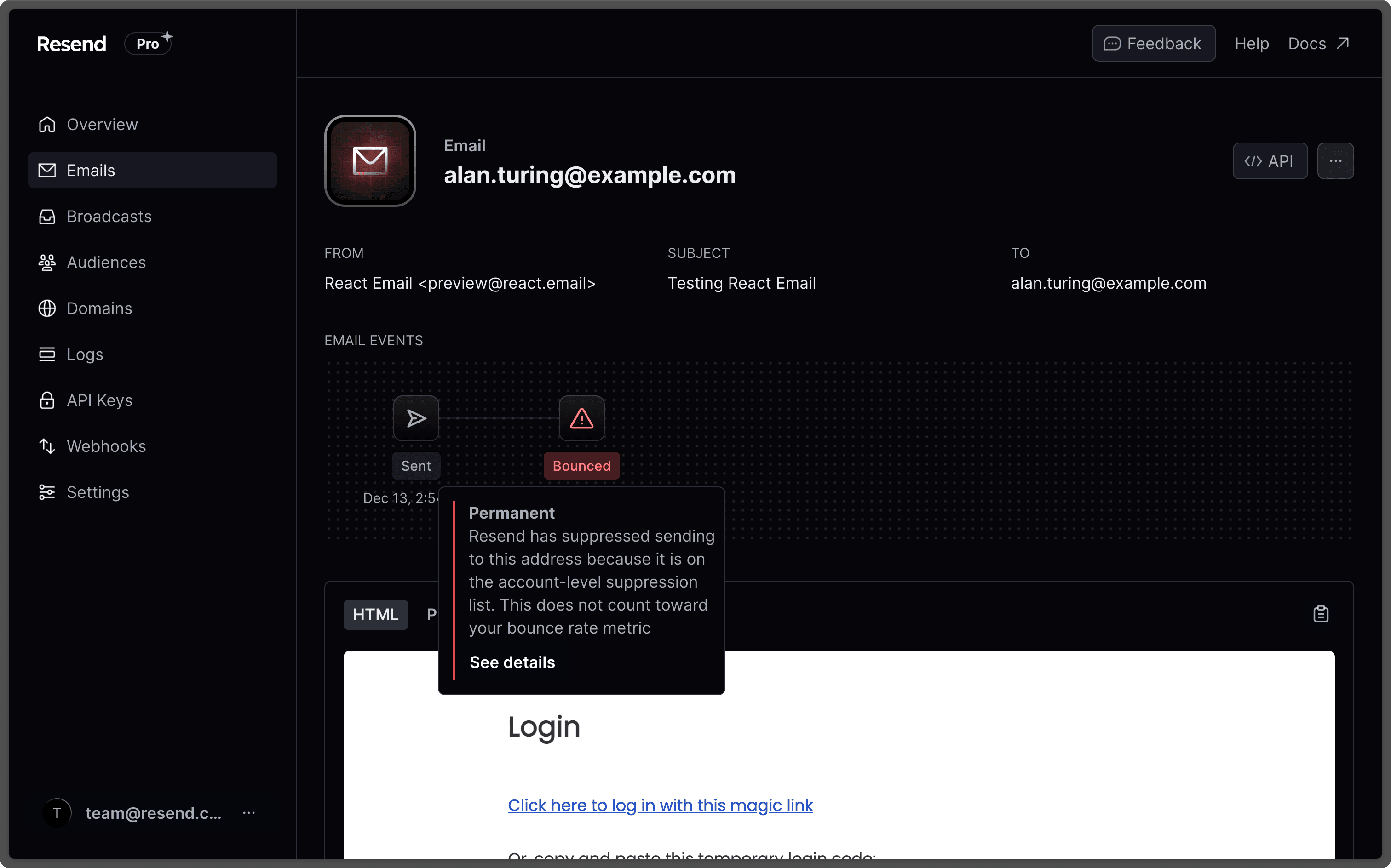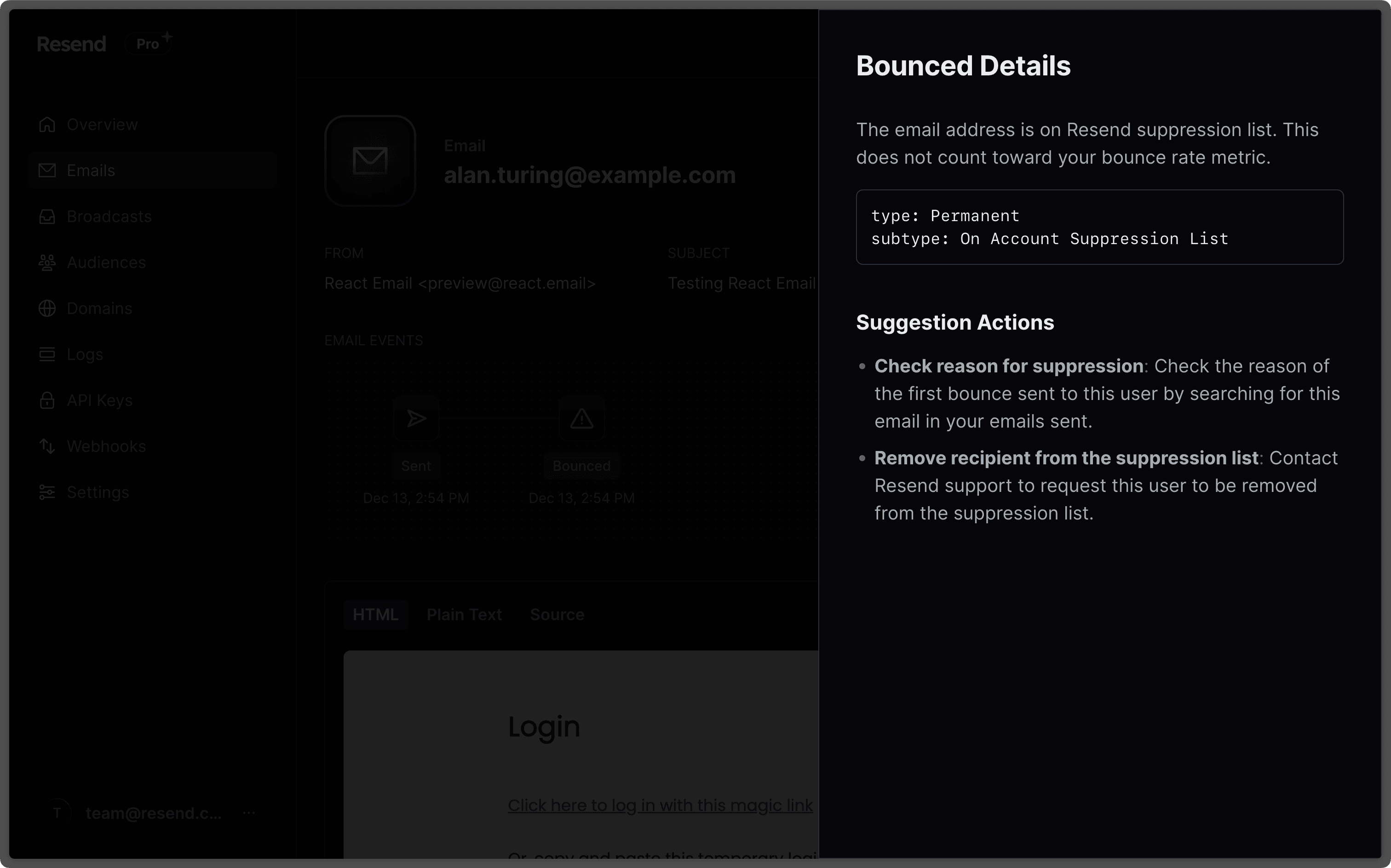Email Bounce Details
Understand the underlying reason why an email bounced.
Imagine you're sending a package to a friend who lives in another country. After a few days, you receive a notification that the package was returned to you. You're not sure why, but you know you must fix the issue before sending it again.
The same thing happens with emails. When an email bounces, you need to understand why it happened so you can fix the issue and send it again.
Why does an email bounce?
A bounce happens when an email cannot be delivered to the person it was meant for and is returned to the sender. It essentially "bounces" back to the person who sent it.
Bounces can happen for various reasons, such as invalid email addresses, full mailboxes, technical issues with email servers, spam filters, message size restrictions, or blacklisting of the sender's email server.
Understanding the bounce reason
When an email bounces, Resend receives a message from the recipient's mail server. The bounce message explains why the delivery failed so the sender can fix the issue.
There are three main types of bounces:
Permanent: - also known as "hard bounce", where the email is rejected by the recipient's mail server, and it will never be delivered.Transient- also known as "soft bounce", where the email is rejected by the recipient's mail server, but it could be delivered in the future.Undetermined- where the recipient's email server bounced, but the bounce message didn't contain enough information for Resend to determine the underlying reason.
Resend already had a way to show you the bounces that happened to your emails.

Now we're surfacing more detailed information in a drawer so you can see the underlying reason why an email bounced and suggested actions.
As you hover on the "Bounced" label and click "See details", the drawer will open on the right side of your screen.

In the example above, you can see not only the bounce type and subtype, but also tips on how to proceed.
If you want to see it all in action, check the Emails page .